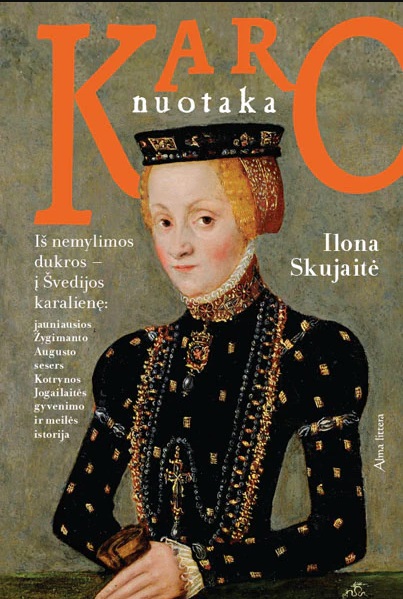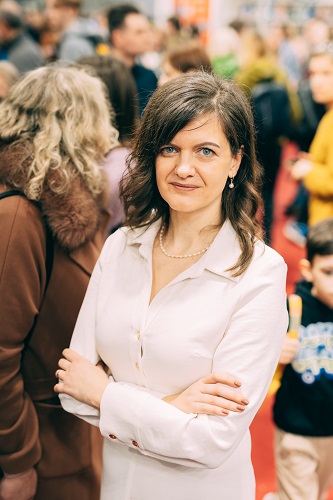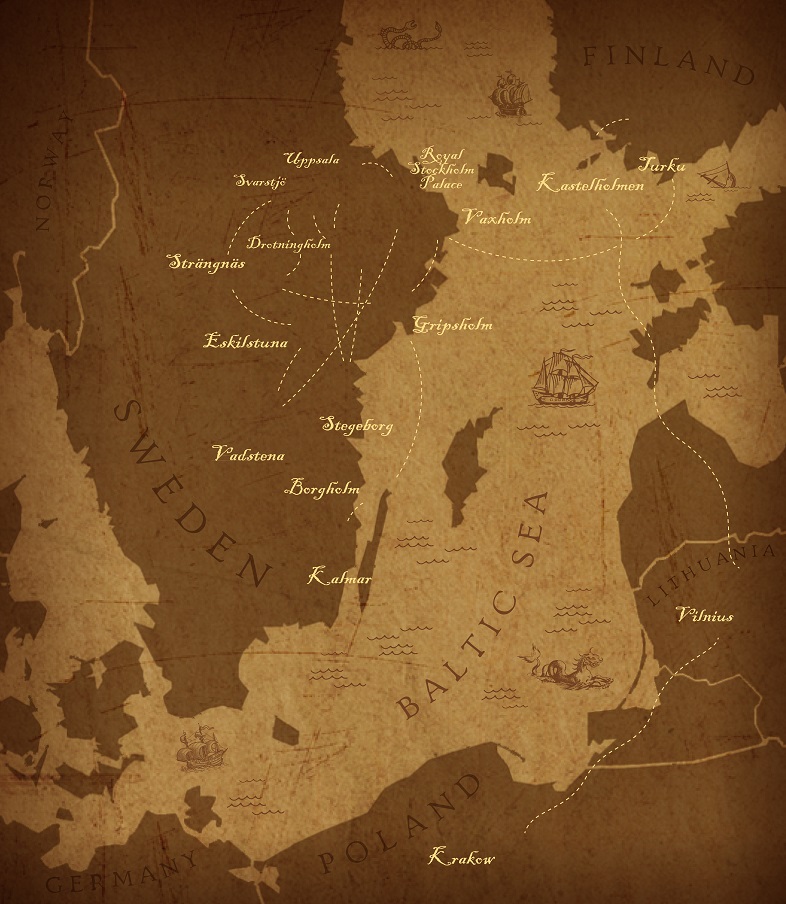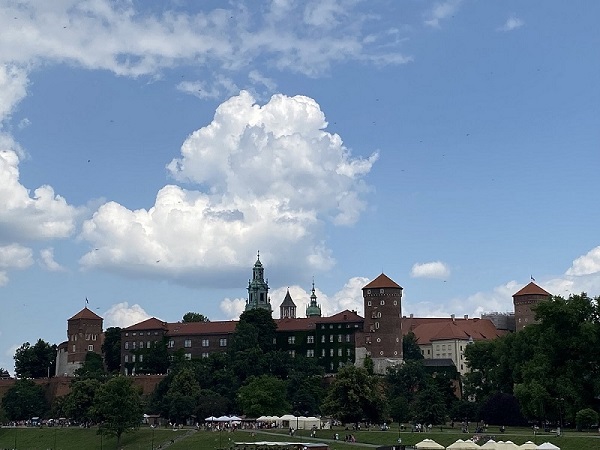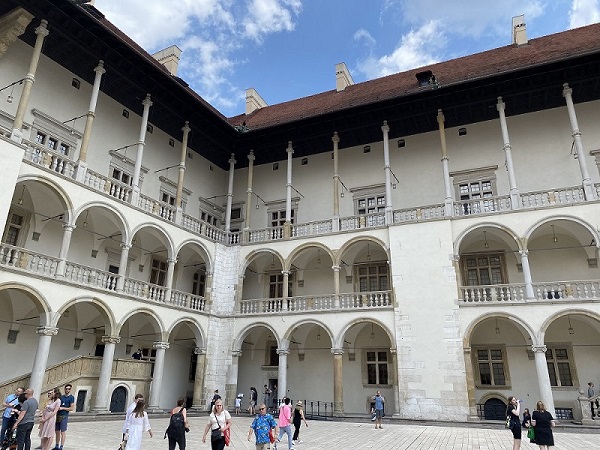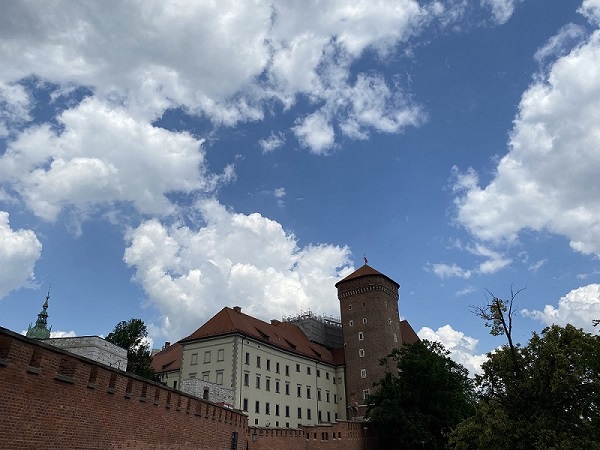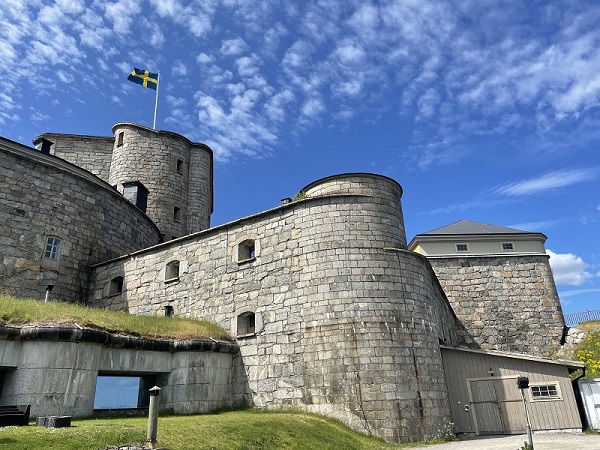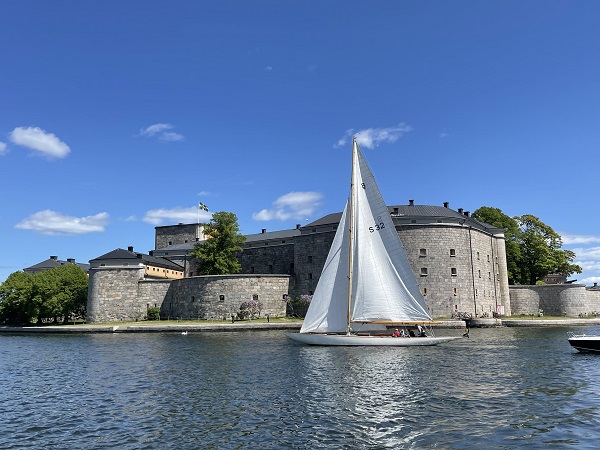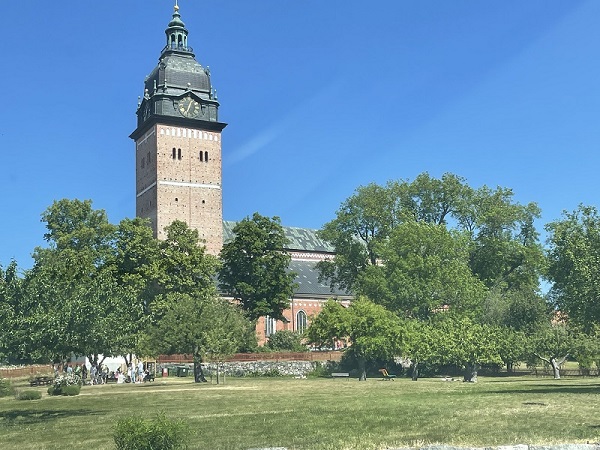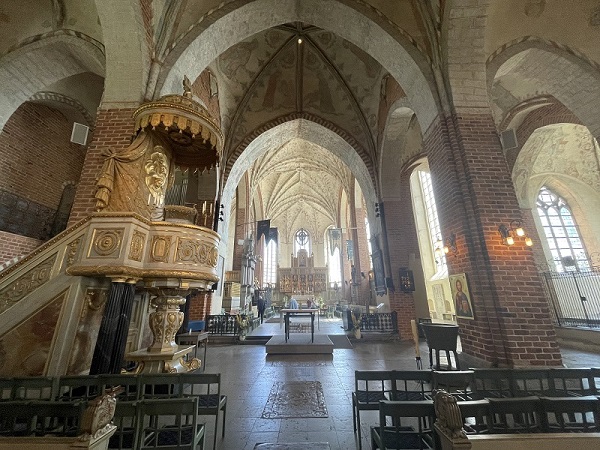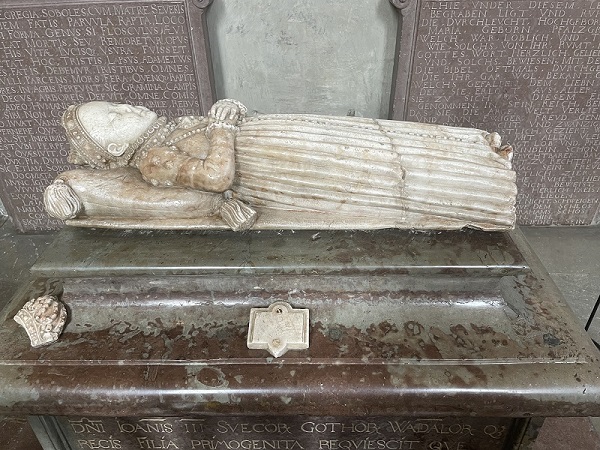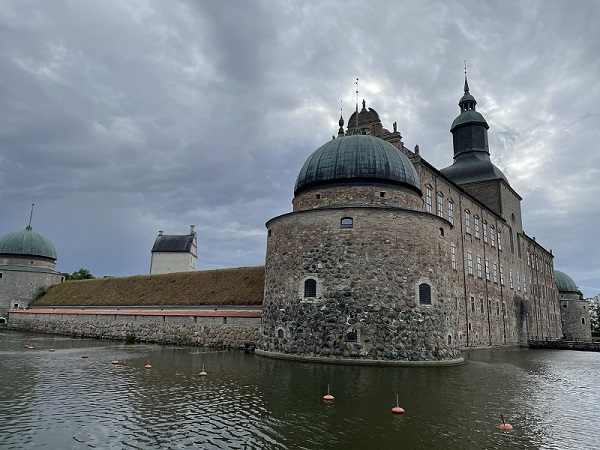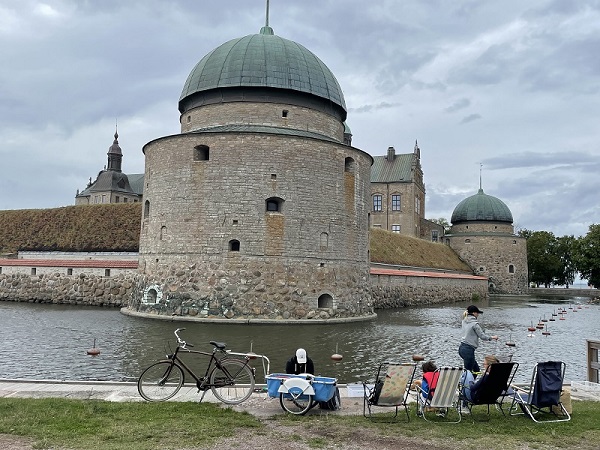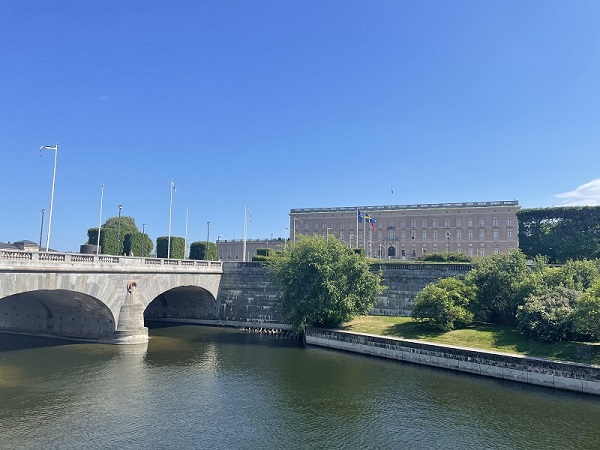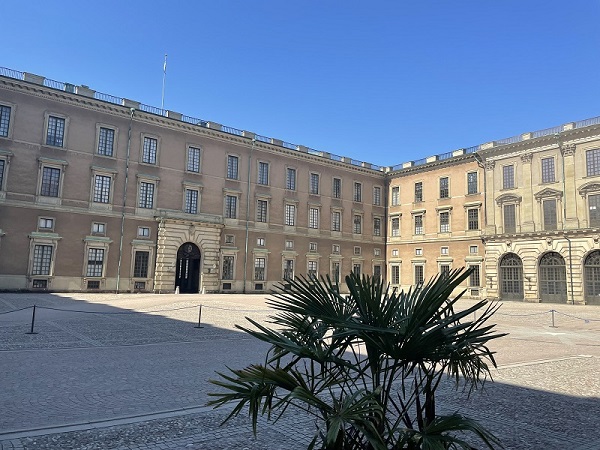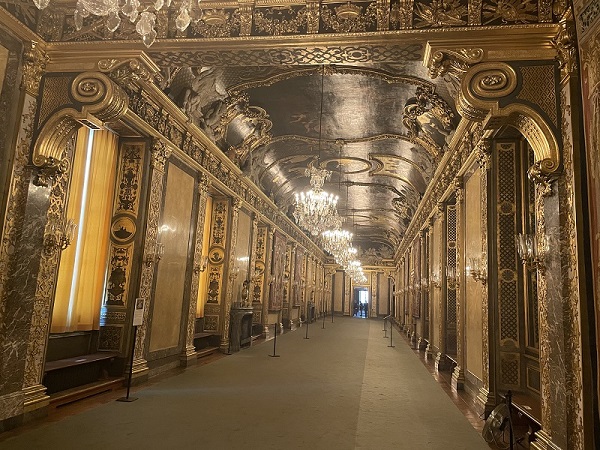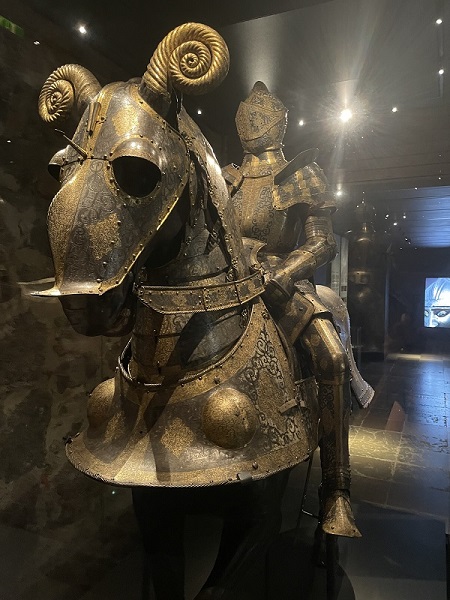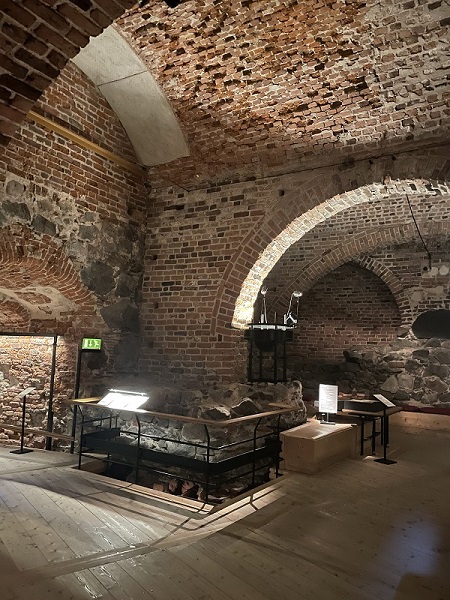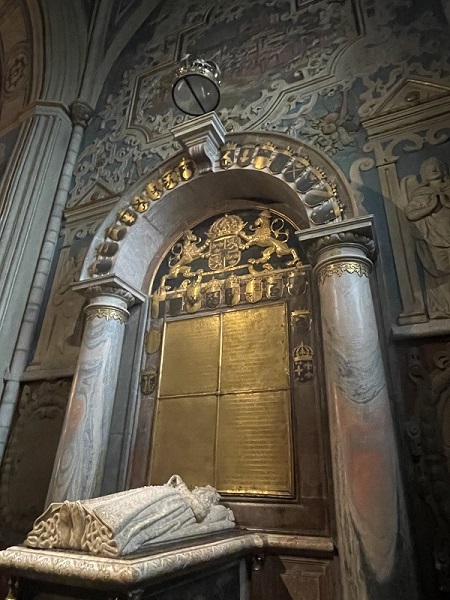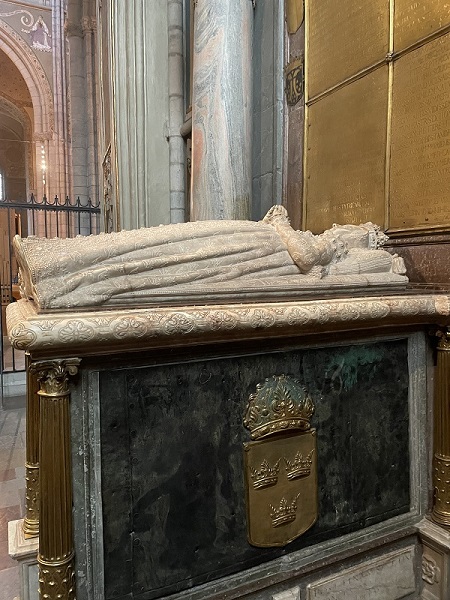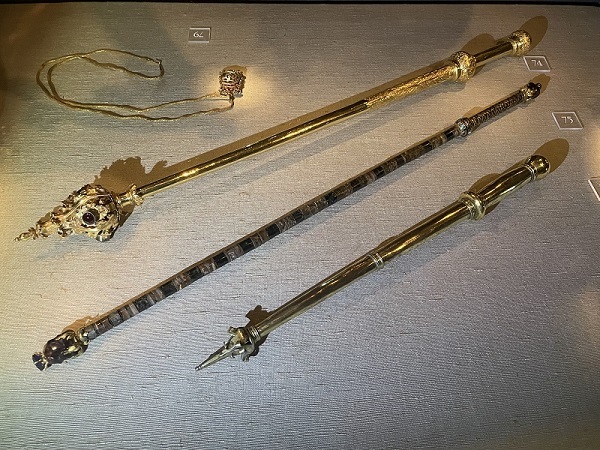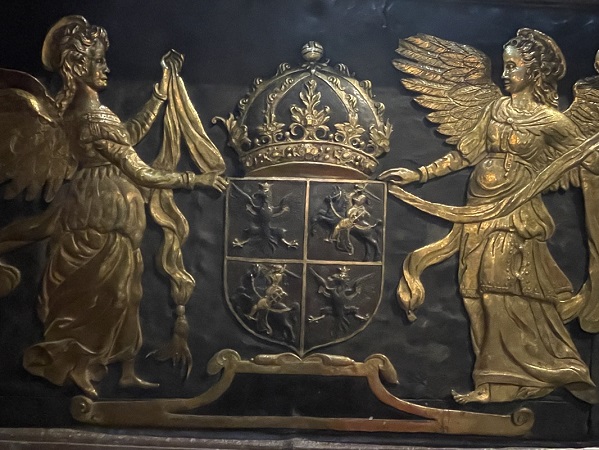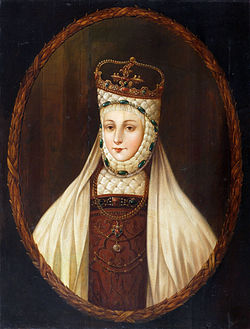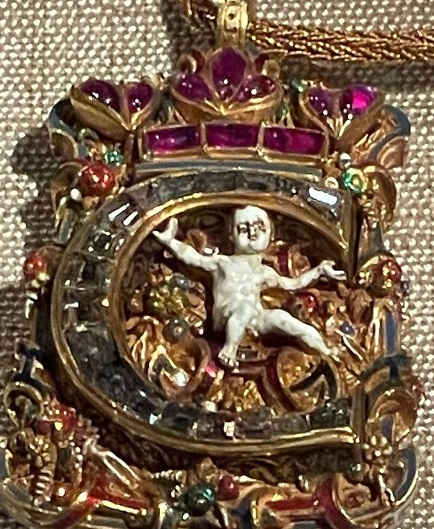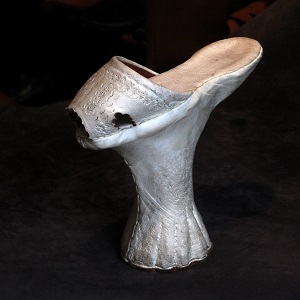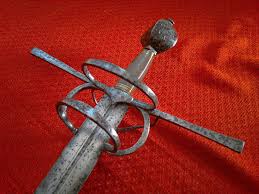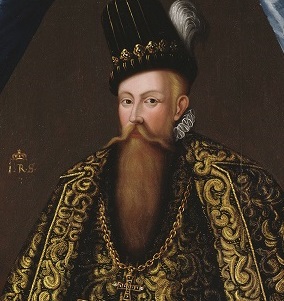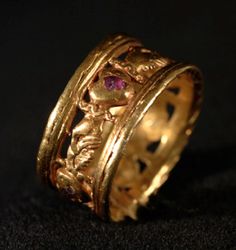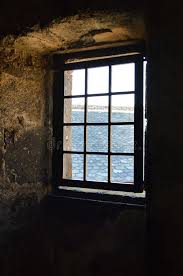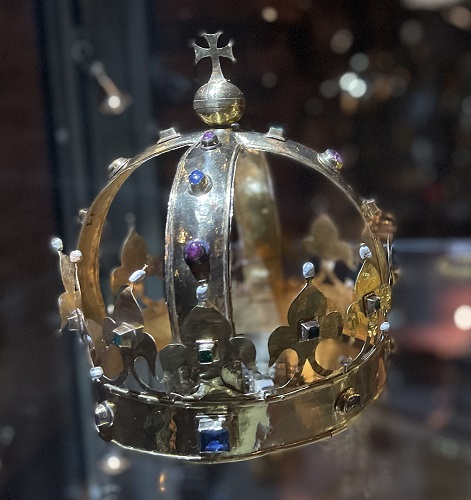The stormy life of Catherine Jagiellon, the youngest daughter of the King of Poland and Grand Duke of Lithuania Sigismund the Old and his wife Bona Sforza is like a broken necklace of pearls, scattered across four countries – Poland, Lithuania, Finland and Sweden. Embark on a 500-year-old journey and discover a world of ancient castles, majestic cathedrals, and opulent royal mansions. Admire Renaissance sculptures of breathtaking beauty and glimpse the luxurious jewelry and crowns that once adorned Catherine Jagiellon.
Immerse yourself in the grandeur and intrigue of royal life!
This thematic route was developed by journalists Gerda Butkuvienė, a tourism communication specialist, and Ilona Skujaitė, author of the historical novel "The Bride of War" (published by Alma Littera). The visualization was created by Aistė Lapinskaitė. The route was developed in collaboration with the Embassy of the Republic of Lithuania in the Kingdom of Sweden.
Royal Wawel Castle (Poland) – Palace of the Grand Dukes of Lithuania (Lithuania) – Kastelholmen Castle (Åland Islands) – Turku Castle (Finland) – Vaxholm Harbor (Sweden) – Gripsholm Castle (Sweden) – Strängnäs Cathedral (Sweden) – Svarstjö Castle (Sweden) – Eskilstuna (Sweden) – Vadstena Castle (Sweden) – Stockholm Royal Palace (Sweden) – Uppsala Cathedral (Sweden) – Stegeborg Castle (Sweden) – Drotningholm Palace (Sweden) – Kalmar Castle (Sweden) – Borgholm Castle (Öland Island, Sweden).
1. Royal Wawel Castle, Krakow, Poland
Place of birth. Catherine Jagiellon, the youngest daughter of the King of Poland and the Grand Duke of Lithuania Sigismund the Old and his wife Bona Sforza, was born on November 1, 1526, in Kraków, Poland. Catherine was the fifth child of this royal family – she had an only brother Sigismund Augustus and three sisters – Izabela, Sofia and Ann. Catehrine lived in Krakow for almost 27 years with breaks.
Excerpt from the book The Bride of War:
My father, a king of the illustrious Jagiellon dynasty that once ruled half of Europe, and my mother, a noblewoman descended from the rulers of Milan, demand much of me. As their youngest child, an unexpected daughter, I must be a dutiful queen and obedient daughter. My mother, a fierce lioness, tirelessly defends Poland and Lithuania.
VISIT: The story of Smaka, the dragon of Wawel Castle, is one of the legends surrounding the castle in Krakow, which became the royal residence of the rulers of Lithuania and Poland (together with Vilnius). In its dungeons, you can still visit the dragon's cave. Wawel Castle, a historic landmark perched on the Vistula River, has stood as a symbol of Polish power since the 11th century. During the Renaissance era, it was transformed into a magnificent palace under the reign of Sigismund the Old and Bona Sforza, the parents of Catherine Jagiellon. Today, visitors can explore its opulent rooms, including the royal apartments, treasury, and armory. The castle's cathedral houses the sarcophagi of several Polish monarchs, including Sigismund the Old and his son, Sigismund Augustus, Catherine Jagiellon's brother.
Where?: Zamek Wawel, Kraków
More: https://wawel.krakow.pl/en
Photos by Gediminas Inčiūra
2. National Museum The Palace of the Grand Dukes of Lithuania, Vilnius
Royal Wedding. On October 4, 1562, Catherine Jagiellon, the youngest daughter of Sigismund the Old, King of Poland and Grand Duke of Lithuania, married Prince Johan Vasa of Sweden and Duke of Finland. The solemn wedding ceremony took place in Vilnius Cathedral. During the ceremony, the groom presented Catherine with a gold ring inscribed with the Latin phrase "Nemo nisi mors" (Nothing But Death). The ceremony was officiated by Valerijonas Protasevičius, the Bishop of Vilnius.
Excerpt from the book The Bride of War:
The solemn hour of Princess Catherine was illuminated by the prayers of the multitude gathered to witness her future happiness. She calmly uttered the words of the oath, marrying the handsome young Duke of Finland at a time when she least expected to find love and motherhood. She felt as though she were dreaming, as if the woman she saw in the mirror that morning, adorned in wedding attire, was a stranger. Today, all eyes were on her, a stark contrast to the years of obscurity she had endured.
VISIT: The Palace of the Grand Dukes of Lithuania, the cradle of Lithuanian statehood, has stood as a symbol of power and culture since the 14th century. From these halls, Grand Duke Gediminas extended invitations to European craftsmen, shaping Vilnius into a thriving metropolis. The palace served as the political, cultural, and spiritual heart of the Grand Duchy of Lithuania, housing its rulers and hosting significant diplomatic events. Today, visitors can explore the reconstructed palace, delving into its rich history through archaeological finds, restored interiors, and captivating collections of weapons, armor, tapestries, maps, and other historical artifacts.
Where?: Palace of the Grand Dukes of Lithuania, Katedros square 4, Vilnius
More: https://www.valdovurumai.lt/
Photos by GO Vilnius
3. Kastelholmen Castle, Finland
Husband's wedding gift. The marriage contract between Catherine Jagiellon and Johan Vasa outlined the bride's dowry and the groom's bequest to his future wife. Johan Vasa promised Catherine wealth and lands in Finland and Estonia, including the Åland Islands and Kastelholmen Castle, which would become hers upon his death.
Excerpt from the book The Bride of War:
Duke Johan’s generosity knew no bounds. He not only granted me lands in Finland but also allowed me to bring sixty people from my court in Vilnius to Åbo, including ladies-in-waiting, a confessor, a chancellor, grooms, lilliputians and all my beloved horses. Most importantly, despite being a Lutheran, he agreed to a Catholic wedding ceremony and promised to raise our future children as Catholics.
VISIT: The Åland archipelago, a breathtaking expanse of over 6,500 islands belonging to Finland, is home to the impressive medieval Kastelholmen Castle. In the 16th century, by order of King Gustav Vasa, the castle was transformed into a royal hunting lodge. It was within these walls that his son, Johan Vasa, was appointed Duke of Finland in 1556. The incompletely restored castle offers a glimpse into its rich history. Visitors can explore the former prison and kitchen facilities, and learn about the witch trials that once took place within its walls. Lithuanian visitors may be particularly interested in the coat of arms of Catherine Jagiellon and the Republic of Two Nations, which features the Lithuanian flag and Polish eagle, on display in one of the galleries. The castle is open to the public from May to September.
Where?: Kastelholms slott, 5 Tosarbyvägen, Kastelholm, Åland Islands
More: https://www.aland.travel/kastelholm-en
Photos by Gerda Butkuvienė
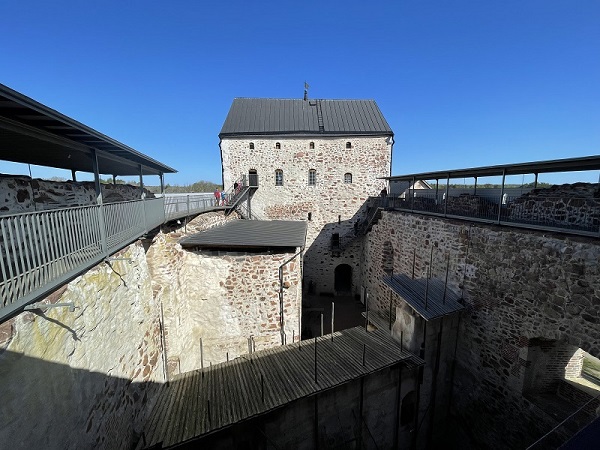
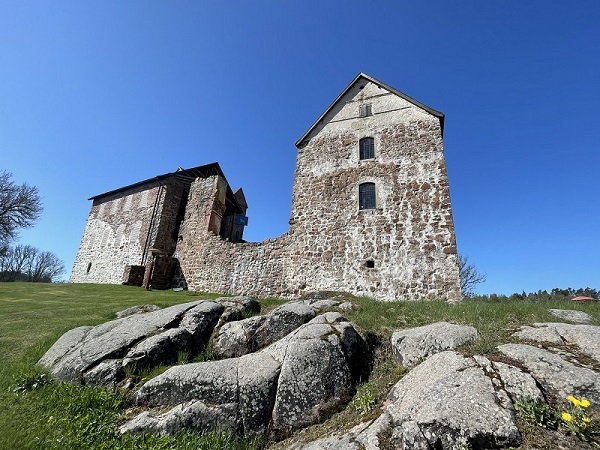
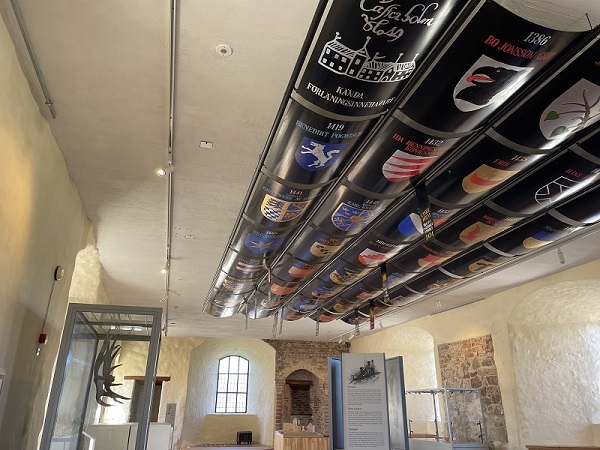
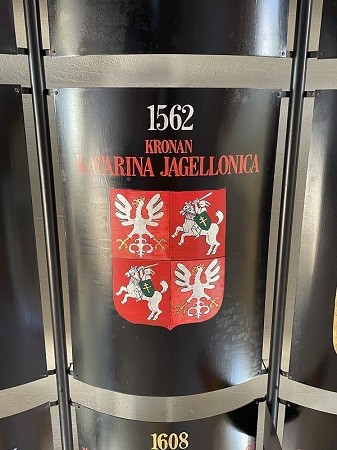
4. Turku Castle, Finland
Honeymoons before the war. Following a whirlwind post-wedding journey, Catherine Jagiellon arrived at Turku Castle, the residence of her husband, Duke of Finland Johan Vasa. A lavish Christmas celebration was held in 1562 to welcome the new duchess, showcasing her impressive dowry. However, their time together was short-lived. Within eight months, a power struggle between John Vasa and his brother, King Erik XIV of Sweden, led to an attack on the castle, forcing the couple to flee. Swedish warships bombarded the castle, with cannonballs even penetrating Catherine's bedroom.
Excerpt from the book The Bride of War:
The table, adorned with exquisite silver dishes, was the center of attention. However, it was the gilded forks from my dowry that truly captivated the guests. Some eyed them with curiosity, while others hesitated to use them, timidly stabbing their food. Bishop of Abo, perhaps the most traditional of them all, continued to dine with his hands and knife, seemingly oblivious to the newfangled cutlery. I recalled my mother's tales of how she had introduced forks from Italy to Poland and Lithuania, only to be met with suspicion. The two prongs, it seemed, resembled the devil's horns to many.
VISIT: The 13th-century Turku Castle, located in Finland's oldest city, still bears the imprint of Catherine Jagiellon. The 16th-century Hall, adorned with portraits of her family, stands as a testament to her time there. Before ascending to the Swedish throne, Duke Johan and Duchess Catherine Jagiellon transformed the defensive castle into a Renaissance palace. During the season, visitors can embark on guided tours of the castle courtyard and medieval sections, or participate in the "Princess's Journey," a special tour for children that delves into the life of Catherine Jagiellon.
Where?: Turun Linna, Linnankatu 80, Turku
More: https://www.turku.fi/en/turkucastle
Photo by Ilona Skujaitė
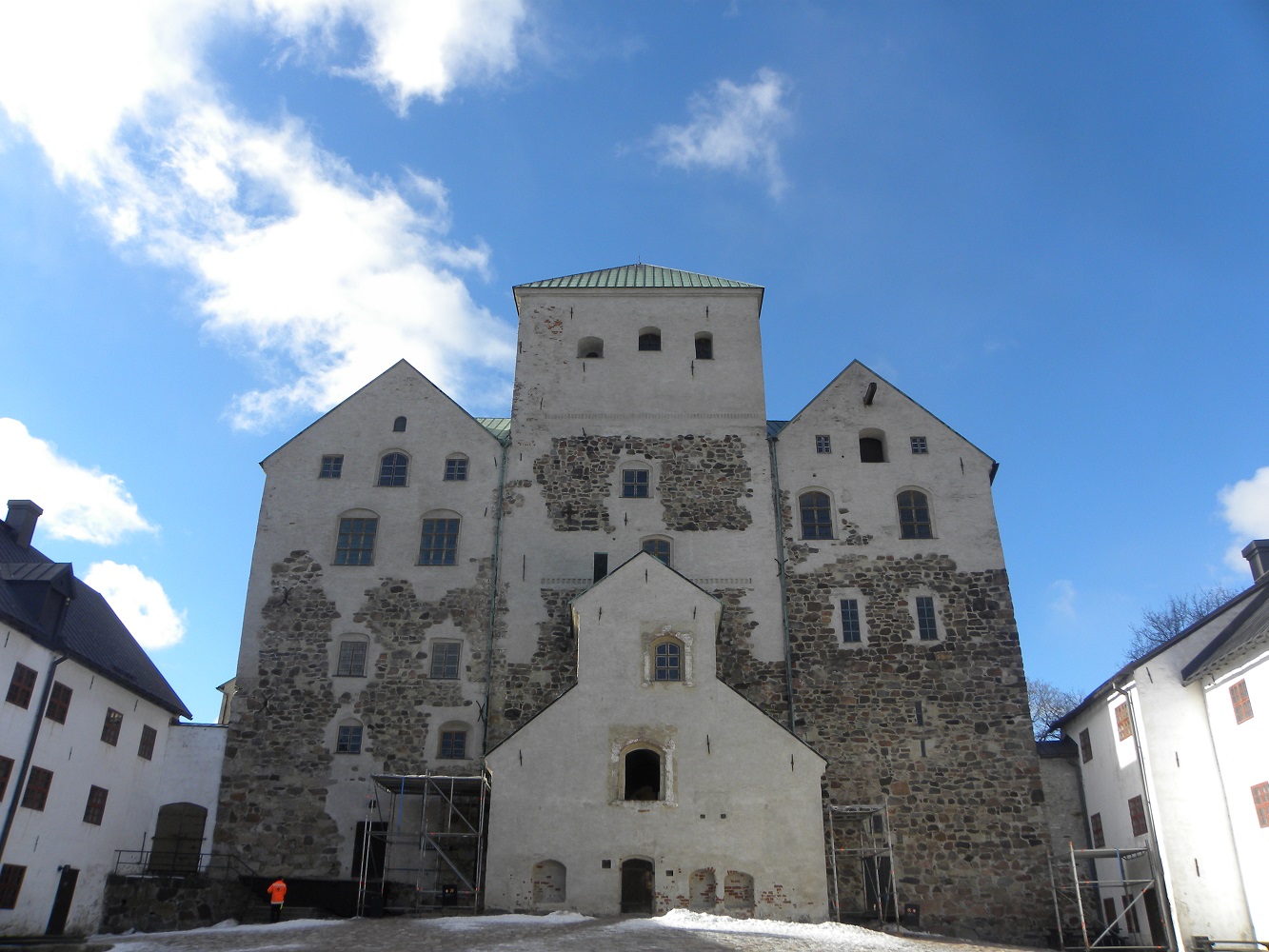
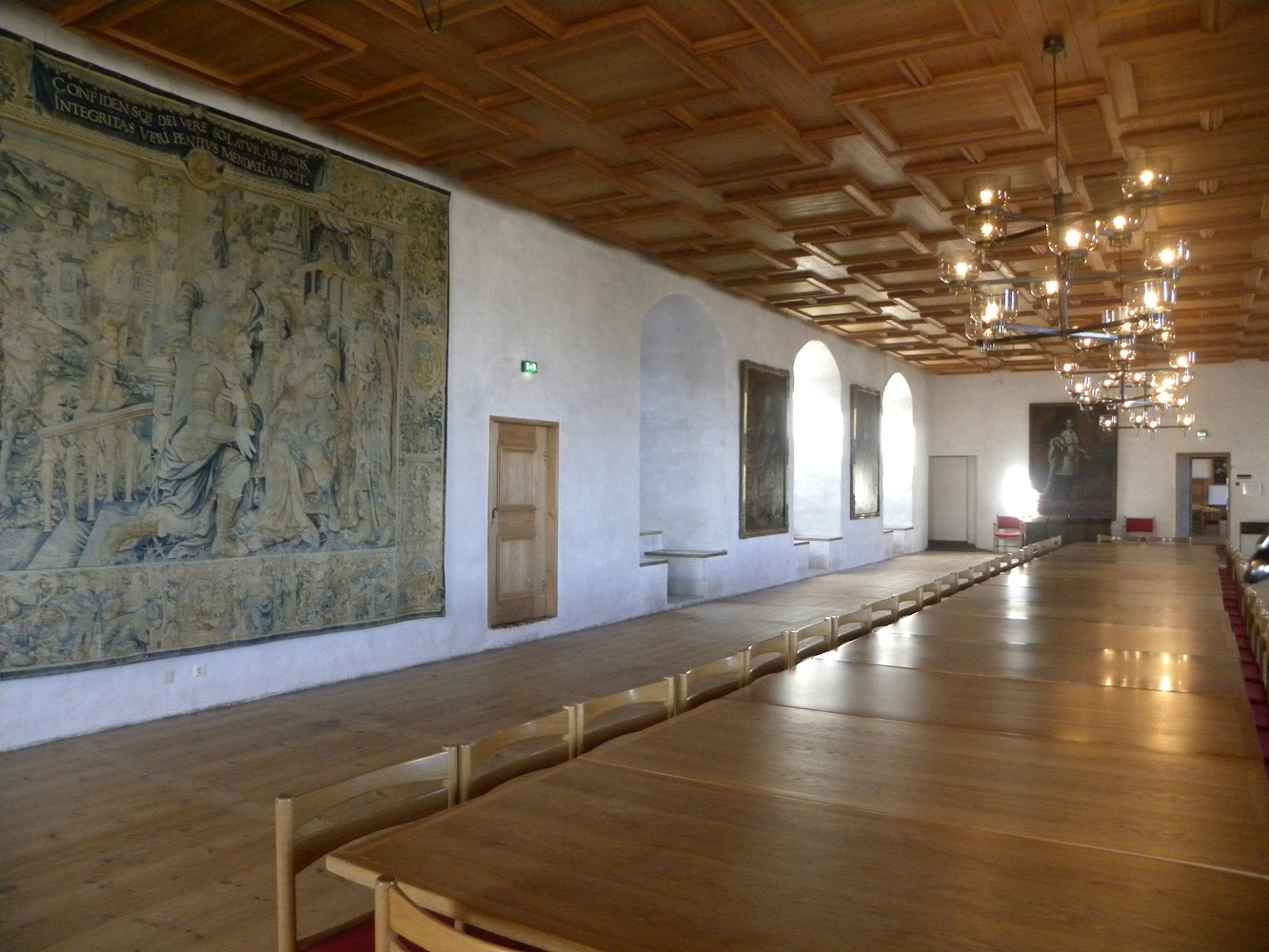
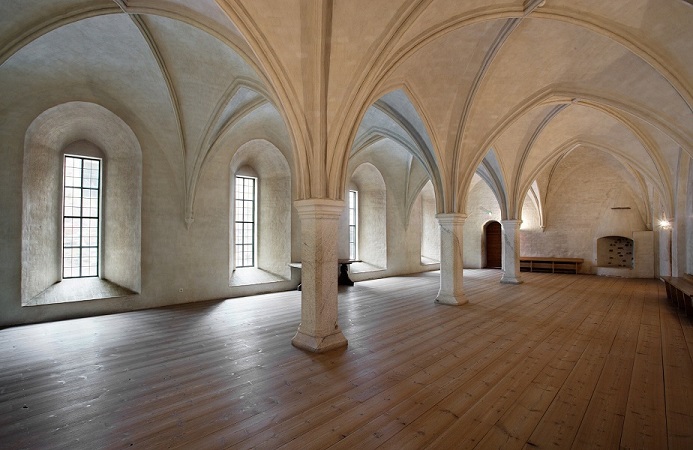
5. Port of Vaxholm, Sweden
The fate of the wedding ring. In August 1563, Catherine Jagiellon and Johan Vasa were brought to the port of Vaxholm, awaiting their fate. Johan was informed that he would be imprisoned by his brother, the king. Catherine, though offered freedom, chose to share her husband's imprisonment. It is believed that it was during this time that Catherine displayed her wedding ring, inscribed with the Latin phrase "Nemo Nisi Mors" (Nothing But Death), to the king's minister, explaining her unwavering loyalty.
Excerpt from the book The Bride of War:
Her gaze was fixed on Duke John of Finland, standing at the other end of the deck. Time seemed to rewind, transporting her back to the Grand Duke's palace, where she first encountered the persistent Swedish prince with his icy blue eyes, who had braved the Baltic Sea to seek her hand in marriage. She could almost hear Duke Johan's trembling voice as he uttered his wedding vows in Vilnius Cathedral. The memory of their intimate moments together filled her with longing. She would rather face death than return to a life of icy solitude.
Visit: Vaxholm – the pearl of the Stockholm archipelago. It can be reached from Stockholm by boat (the trip takes about an hour) or by car. Vaxholm, a picturesque archipelago comprising 70 islands, is dominated by the stunning island of Vaxholmen and its historic Kastelletto fortress. During the summer season (mid-May to late August), a cable ferry transports visitors to this 16th-century fortress. The ancient walls, originally built by King Gustav Vasa to protect the Stockholm archipelago, now house a museum, cafe, escape room, and offer accommodation.
Where?: Vaxholms Gästhamn, Västerhamnen, Vaxholm
More: https://www.destinationvaxholm.se/sv/
Photos by Gerda Butkuvienė
6. Gripsholm Castle, Sweden
The king born in prison. The king born in prison. Imprisoned for four years in Gripsholm Castle, Catherine Jagiellon and Duke Johan endured hardship. In June 1564, at the age of 38, Catherine gave birth to their daughter, Izabela, without any medical assistance. Two years later, in June 1566, their son Sigismund Vasa was born, who would later become the King of Sweden and the Republic of Two Nations. Gripsholm Castle also witnessed one of the couple's deepest sorrows: the tragic death of their daughter.
Excerpt from the book The Bride of War:
Mrs. Krupskaya bathed the baby and swaddled it in a sheet purchased from the knechts a few days earlier, using the jewels from my dress to pay. The newborn, with her large blue eyes, gazed calmly around for a moment before letting out a piercing cry that no one could soothe. I understand she's hungry, and there's no wet nurse available. I'll have to feed her myself, like a simple village girl. There's no other choice. I pray that I have even a drop of milk, or my baby will perish.
VISIT: The 500-year-old red walls of Gripsholm Castle stand as a testament to Sweden's rich history. As one of the most visited royal castles in the world, it boasts the oldest and largest portrait gallery. Among its 5,000 art pieces, a prominent portrait of Sigismund the Old, Catherine Jagiellon's father, holds a place of honor. While Gripsholm Castle houses an extensive portrait gallery, there is no portrait of Queen Catherine herself. However, a small painting depicting the iconic scene of Catherine showing her wedding ring to the Swedish king's minister can be found within its walls.
During the peak season (May to September), guided tours in Swedish or English are offered, allowing visitors to explore the portrait gallery, the palace theater, and the room where Catherine and her family were imprisoned. Known as the Duke's Charles Chamber, this room is considered one of the best-preserved 16th-century Swedish interiors.
The distance from Stockholm to Gripsholm Castle in Mariafred is 70 km.
WHERE?: Gripsholms Slott, Mariefred
More: https://www.kungligaslotten.se/english/royal-palaces-and-sites/gripsholm-castle.html
Photos by Gerda Butkuvienė
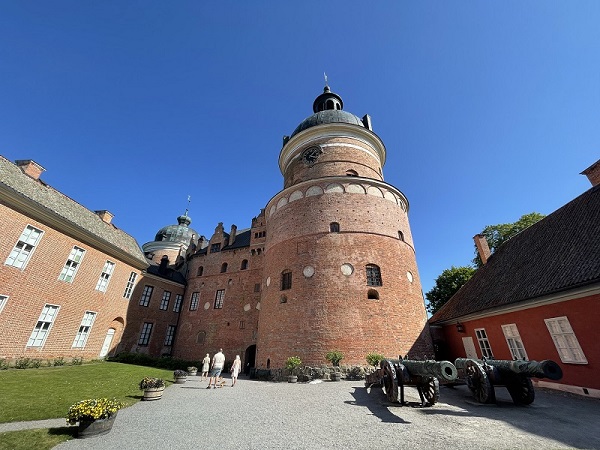
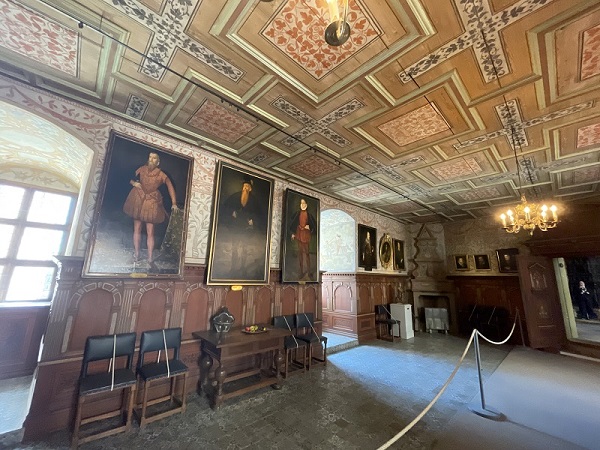
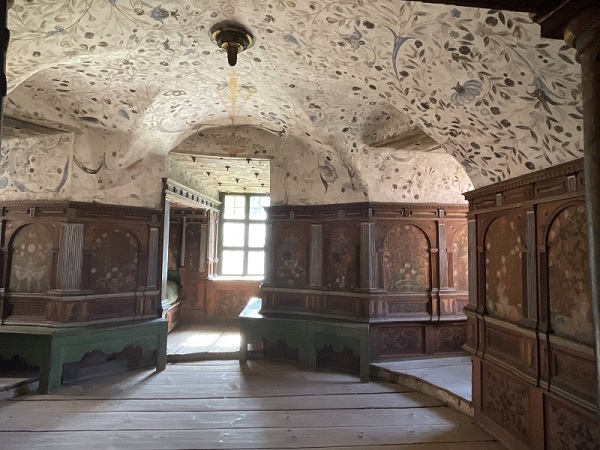
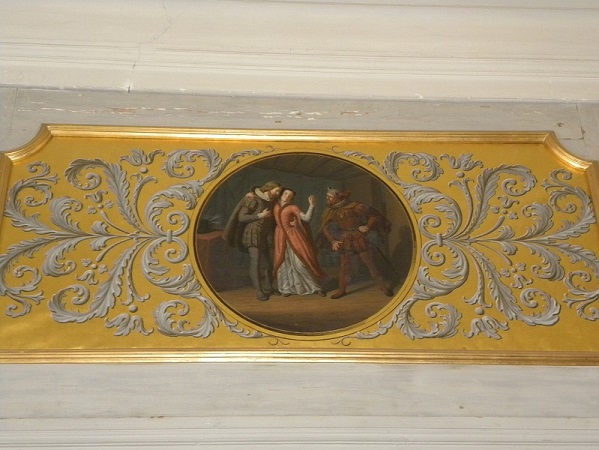
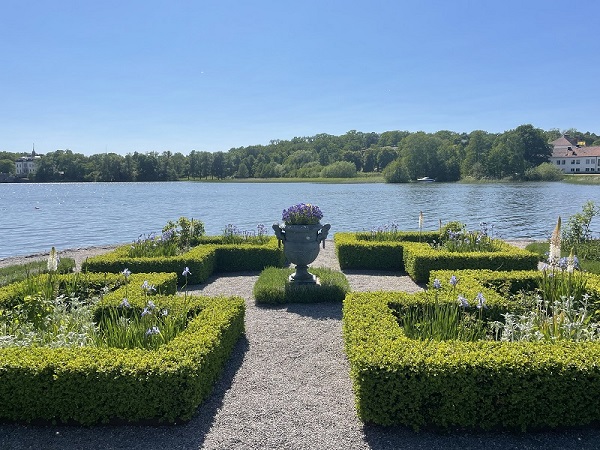

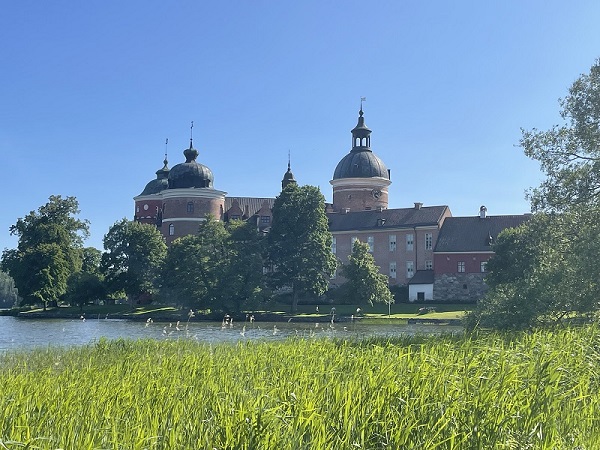
7. Strängnäs Cathedral, Sweden
The grave of the beloved daughter. Following their ascension to the Swedish throne, Catherine and John had their firstborn daughter, Isabella, reburied in Strängnäs Cathedral. At their request, renowned Flemish sculptor and architect Willem Boy created a stunning tombstone for the child. This unique memorial, distinguished by its exceptional artistry, is one of the most remarkable children's tombstones in Sweden.
Excerpt from the book The Bride of War:
She just passed away and I can't remember the last time my daughter looked at me – last night or this morning? And what did she say to me last time? What did she eat? When was the last time she called "mom"? What if one day I forget what her voice was and what she looked like? "John," I grab my husband's hand in fright, "promise me that you will order a tombstone for her." Carved out of white stone. Such that she looks like she is alive.
VISIT: Located 60 kilometers from Stockholm, this town is one of Sweden's oldest, dating back to the 12th century. It was here, on June 6, 1523, that Gustav Vasa was elected king, marking Sweden's independence from the Kalmar Union with Denmark and Norway. Consequently every year on the 6th of June Sweden's National Day is celebrated. The 13th- and 14th-century cathedral, a symbol of the town's rich history, welcomes visitors during specific hours. A poignant reminder of Catherine Jagiellon's tragic loss, the tombstone of her daughter is located near the altar. The pearl necklace, a precious artifact, taken from her grave, is kept secure to prevent theft.
Where?: Strängnäs cathedral, Biskopsgränd 2, Strängnäs
More: https://www. svenskakyrkan.se/strangnas/ domkyrkan
Photos by Gerda Butkuvienė
8. Svarstjö Castle, Sweden
The Mad King. In this castle, Catherine Jagiellon and Johan Vasa met the King of Sweden Erik for the first time after they were released from the imprisonment in Gripsholm. Erick was suffering from an illness at the time.
Excerpt from the book The Bride of War:
King Eric reached out to the child, beckoning him closer. "Come to me, little one," he coaxed. The frightened boy, however, clung to his mother's skirt, seeking refuge. Princess Catherine barely restrained herself from snatching her son and fleeing back to the ship.
VISIT: Although Svarstjö Castle, with its gleaming yellow facade and clock tower, is a popular wedding venue, it's important to note that the true historical significance lies in the nearby ruins. To the right, visitors can explore the remnants of a 16th-century castle from the Vasa dynasty. The castle was tragically destroyed by fire in 1687, and its bricks were repurposed to rebuild the Royal Stockholm Castle, which had also suffered a similar fate. Today, visitors can explore the former castle grounds via a path lined with informative stands. According to them, John III, husband of Catherine Jagiellon, established a hunting park near the castle, importing fallow deer from England. The 18th-century Rococo castle offers visitors a glimpse into the past with its preserved interiors, as well as modern amenities like a cafe and ice cream shop.
Where?: Svarstjö slott, Svarstjövägen 2, Svarstjö
More: https://svartsjoslott.com/
Photos by Gerda Butkuvienė
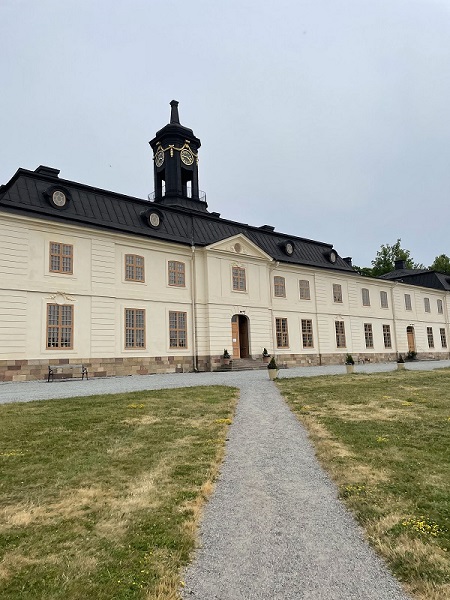
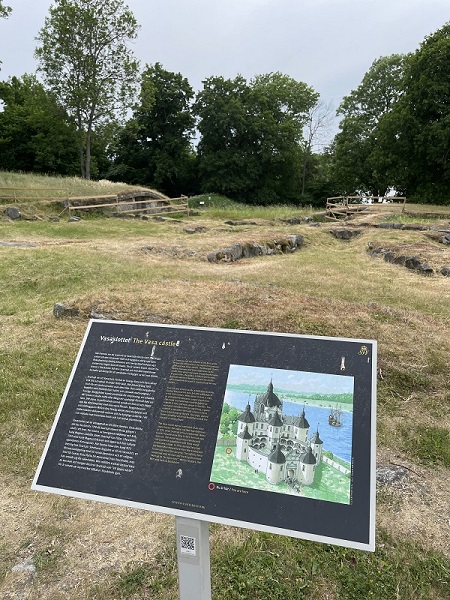

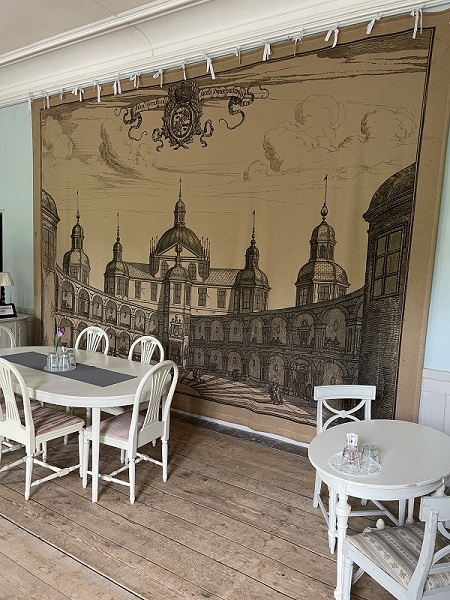
9. Eskilstuna, Sweden
The birth of a daughter. Catherine Jagiellon gave birth to her third child, a daughter named Ann, in Eskilstuna on May 17, 1568. This was a really challenging birth for the 42-year-old princess.
Excerpt from the book The Bride of War:
Faithful Dorothy and all the ladies jump around me, never leaving me alone for a moment, and keeping me from sinking into sadness and crying, fearing that my baby in the womb might choke on tears. Now only he, poor thing, saves me from a great disaster, because in Stockholm I was still stalked by the Moscow vultures.
VISIT: To uncover the remnants of the royal castle commissioned by King Gustav Vasa, one must visit the City Museum in Eskilstuna rather than the city itself. The museum houses a collection of ornate limestone pieces, the sole tangible legacy of the castle. Intriguingly, one of these stones is adorned with oak leaves, symbolizing the alliance between John III and his brother Charles against King Eric. In the 16th century, Eskilstuna Huus castle stood near Klostergatan, close to the Kloster Church. Unfortunately, a devastating fire in 1680 destroyed the castle. Today, visitors can explore the remnants of this historical site at the City Museum. The museum's exhibition showcases artifacts, including ornate limestone pieces, and a model of the former castle. It also provides information about Princess Ann Vasa, daughter of Catherine Jagiellon, who was born within these walls.
Where?: Eskilstuna stadsmuseum, Faktorigatan 4C, Eskilstuna
More: https://visiteskilstuna.se/eng/visiteskilstuna.se/see--do/culture--history/eskilstuna-city-museum
Photos by Gerda Butkuvienė


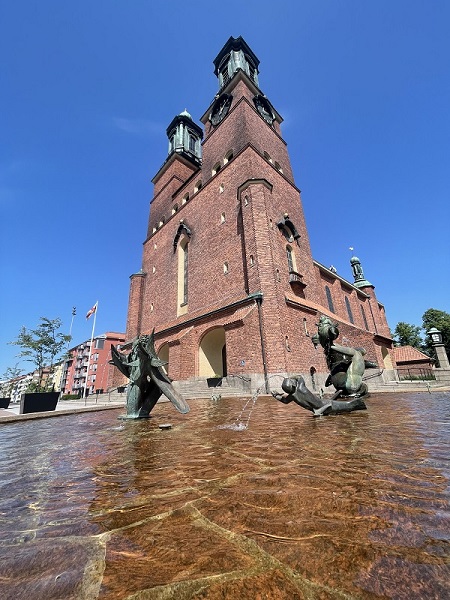
10. Vadstena, Sweden
Rebel Center. In the summer of 1568, Duke John, with the support of his brother Karl, initiated a rebellion against King Eric XIV of Sweden. Vadstena was the first town to fall under rebel control. Catherine Jagiellon stood by her husband's side throughout this tumultuous period.
Excerpt from the book The Bride of War:
"We should head to Vadstena," Prince Johan suggests, "where skilled artisans can quickly mint coins from our silver ingots." I vow that if our funds dwindle, I will sacrifice my jewels and the pearls from my dresses, for they have already saved our family once before.
VISIT: Vadstena Castle, a remarkable transformation from a defensive fortress to Sweden's best-preserved Renaissance palace, traces its origins back to 1525. King Gustav Vasa commissioned its construction as a southern defense for Stockholm. The reconstruction process, completed in 1620, marked a new chapter in the castle's history. Today, visitors can explore the castle independently, admiring the model of the former fortress, the preserved kitchen, and the tower. Alternatively, guided tours offer a deeper dive into the past, with costumed guides bringing to life the experiences of 16th-century women during the Vasa period, or recounting tales of royal feasts and nighttime intrigue.
One of the thematic excursions "Power and love" follows the footsteps of Johan III and his wife Catherine Jagiellon, who came to this palace in 1580. By the way, historian Eva Mattsson, the author of the Swedish biography of Catherine Jagiellon, lives in Vadstena and runs the company "Bring to Life", which organizes tours for groups in this city. Vadstena Castle, a magnificent royal palace surrounded by a tranquil water canal, is located 250 kilometers from Stockholm. During August, the castle grounds come alive with the traditional Swedish crayfish season (kräftskiva), allowing visitors to fish for crayfish in the castle pond. The castle also hosts a variety of events throughout the year, including concerts and medieval festivals.
Where?: Vadstena slott, Hamngatan 4, Vadstena
More: https://vadstenaslott.com/
Photos by Gerda Butkuvienė
11. Royal Stockholm Palace, Stockholm, Sweden
Reign. In September 1568, the armies of Duke Johan and Duke Charles Vasa marched on Stockholm. The city's inhabitants opened the gates, paving the way for the brothers' victory. After a brief skirmish, King Eric XIV surrendered. Catherine Jagiellon and her husband, Duke Johan, took up residence in the Three Crowns Castle, which would serve as their primary residence during his reign.
Excerpt from the book The Bride of War:
Both men lay groaning on the pavement, unable to move. One tried to staunch the blood flowing from a gash above his eye, while the other spat out two broken teeth, eliciting cruel laughter from the crowd.
– Envoys from Moscow, Your Excellency.
VISIT: The Three Crowns Castle, tragically destroyed by fire in 1697, no longer stands in Stockholm. Today, the Royal Palace of Stockholm, a magnificent Baroque structure built in the 18th century, serves as the official residence and reception venue for the Swedish monarch. As one of Europe's largest palaces, with over 600 rooms, it houses several museums within its walls, including the Royal Apartments, the Treasury, the Arsenal, and the Museum of the Three Crowns.
The Museum of Three Crowns offers a fascinating glimpse into the past, showcasing fragments of the original castle, including the vaults of a 13th-century room. During Johan III's reign, the medieval castle underwent a transformation, evolving into an ornate Renaissance palace. One of the most intriguing artifacts is the velvet canopy of the throne in the Hall of Audiences, believed to have been brought to the Three Crowns Palace by Catherine Jagiellon herself, a testament to her refined taste and Italian heritage.
The Arsenal of the Three Crowns Palace houses a collection of artifacts linked to the Jagiellon dynasty. Among these is the ornate armor of Sigismund Augustus, a gift from Catherine's sister, Anna Jagiellon, to King John III. This gift was a symbol of hope, a wish that Catherine's son, Sigismund, would one day wear this armor, despite being just eight years old at the time of Sigismund Augustus's death. Another notable artifact is a gold bracelet bearing the initials "APS," belonging to Catherine's daughter, Anna Vasa. Known for her intelligence and multilingualism, Princess Anna served as an advisor to her brother, King Sigismund of Poland, and later as a plenipotentiary in Sweden, earning the nickname "the toxic sister."
Where?: Kungliga slottet, Slottsbacken 1
More: https://www.kungligaslotten.se/english.html
Photos by Gerda Butkuvienė
12. Uppsala Cathedral, Sweden
Coronation. On January 1, 1569, Duke Johan ascended to the Swedish throne, becoming King Johan III Vasa. A year later, on July 10, 1569, he and his wife, Catherine Jagiellon, were crowned king and queen of Sweden in a grand ceremony at Uppsala Cathedral. The entire city was adorned for the occasion, and numerous guests attended the lavish festivities. After the coronation, the royal couple was presented with their regalia. This marked the first time in Swedish history that both the king and queen were crowned simultaneously.
Catherine Jagiellon served as Queen of Sweden for fourteen years. Following her death on September 16, 1583, she was laid to rest in Uppsala Cathedral.
Excerpt from the book The Bride of War:
Here, in this sacred Swedish ground, where the bones of many kings lie beneath royal mantles, I feel a profound connection to this land. As I stand here, crowned and anointed, I sense the watchful eyes not only of the living but also of the departed kings and queens who rest beneath this hallowed soil. Every move Johan and I make is observed by these spectral guardians of the past.
VISIT: Uppsala Cathedral, a majestic 13th-century structure with its towering spires, draws visitors from far and wide. As the final resting place of renowned figures like King Gustav Vasa and his wives, as well as King John III and his wives, the cathedral holds a special place in Swedish history. This magnificent edifice, the largest in the Nordic countries, is open to the public during specific hours.
The northern tower of the cathedral houses the Treasury, a treasure trove of royal regalia. Among the precious artifacts on display are the remains of Catherine Jagiellon's crown, adorned with sapphires and pearls. Visitors can also admire her golden scepter, embellished with amethysts, and a medallion inlaid with precious stones, a gift from her loving parents.
Where?: Uppsala cathedral, Domkyrkoplan, 753 10 Uppsala
More: https://www.svenskakyrkan.se/uppsaladomkyrka
Photos by Gerda Butkuvienė
13. Stegeborg Castle, Sweden
Royal residence. This castle holds a special place in history, as it was often visited by Queen Catherine of Sweden and her daughter Ann. She with keen interest in botany and medicinal plants, would spend time tending to the castle gardens alongside her mother.
Excerpt from the book The Bride of War:
My son and daughter will bear their father's name, yet my blood will forever flow through their veins. Through our union, I have forged a bond between the ancient Jagiellon dynasty and the new Vasa line, a legacy that will endure through our children.
VISIT: The ruins of Stegeborg Castle, a 13th-century fortress located 200 kilometers south of Stockholm on the island of Lake Slätbaken, stand as a testament to the past. The round tower is the sole surviving remnant of this medieval castle. It was within these walls that Johan III, the future husband of Catherine Jagiellon and the son of King Gustav Vasa, was born in 1537. Following his father's death, Johan III embarked on a project to transform the castle into a royal residence, adorning it with opulent furnishings. However, by the 18th century, the castle had fallen into disrepair and was ultimately abandoned. Today, visitors can explore the castle's grounds, admiring the impressive apple orchard, the crumbling walls adorned with fragments of stone coats of arms, and the towering castle tower.
Where?: Stegeborg slottruinen, Stegeborgs Egendom AB, Söderköping
More: https://www.stegeborg.se/slottsruinen/
The author of the photos is Gerda Butkuvienė
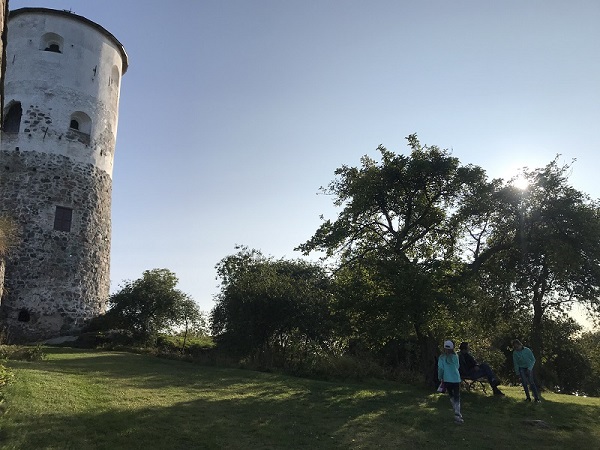
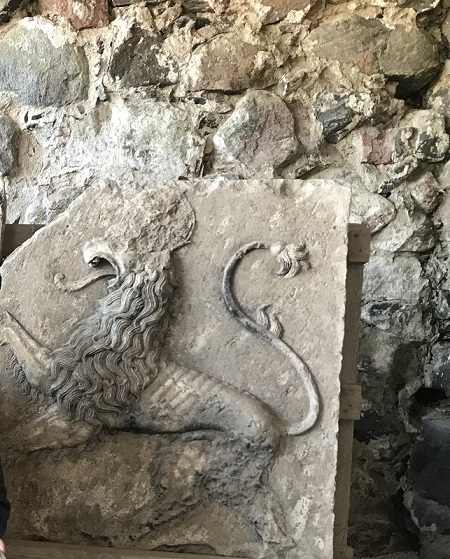
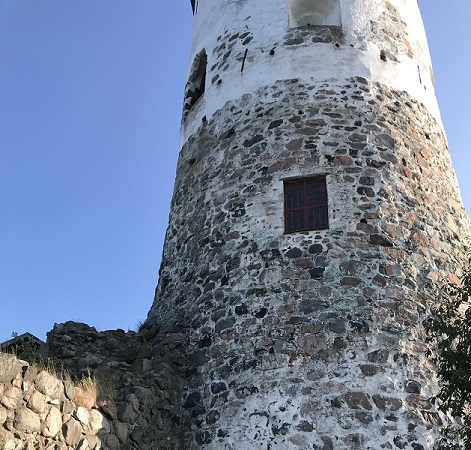
14. Drotningholm Castle, Sweden
A gift for the wife. Johan III Vasa and Catherine Jagiellon are often referred to as Sweden and Finland's Renaissance monarchs. King Johan III commissioned the renowned Flemish architect Willem Boy to construct Drotningholm Palace, a stunning summer residence for Queen Catherine as a testament to their enduring love.
Excerpt from the book The Bride of War:
I silently escorted him to the courtyard, a wave of fear washing over me. I feared this might be my last glimpse of him—the handsome prince with ice-blue eyes who had crossed the Baltic Sea for me. The beloved father of my children, a fearless warrior, and a true leader of his people. He was a king in every sense of the word, and I was filled with immense pride.
VISIT: Drotningholm Palace, an exquisite masterpiece and the current residence of the Swedish royal family, stands as the crown jewel of Sweden's royal castles. Inspired by the grandeur of Versailles, this 17th-century palace, with its stunning theater, enchanting Chinese pavilion, and meticulously landscaped gardens, has been designated a UNESCO World Heritage Site. The original castle, a gift from King John III to Queen Catherine Jagiellon, was tragically destroyed by fire in 1661. Only the evocative image of Catherine's enigmatic smile, captured in a portrait displayed at the palace entrance, remains as a reminder of her enduring connection to this historic site.
Visitors can explore the castle independently or with a guide, with regular tours offered daily in Swedish and English during the season. Situated 15 kilometers from Stockholm on an island in Lake Mälaren, Drotningholm Palace is easily accessible by car, bus, or boat.
Where? Drottningholm slott, Slottsstallet 11, Drottningholm
More: https://www.kungligaslotten.se/english/royal-palaces-and-sites/drottningholm-palace.html
Photos by Gerda Butkuvienė
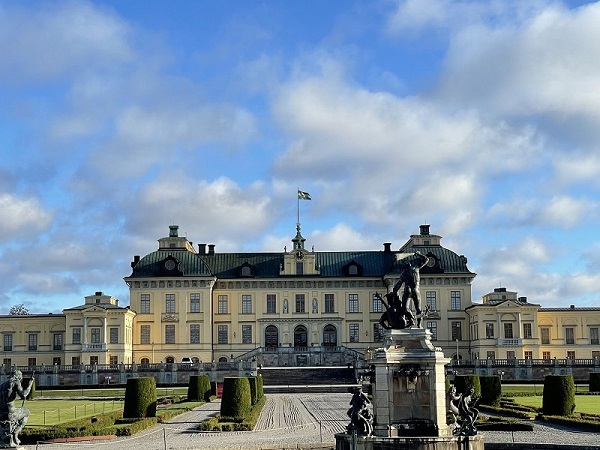
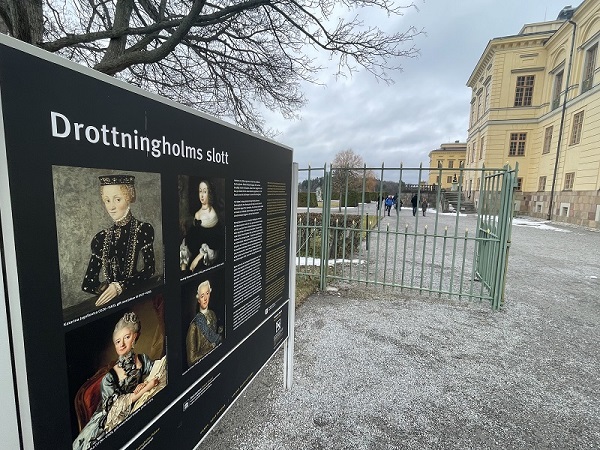
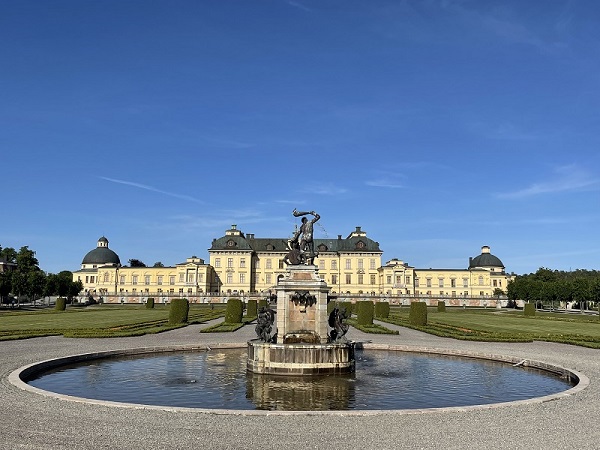


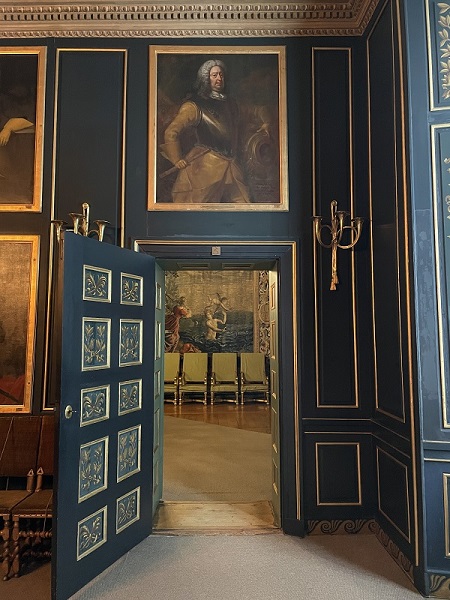
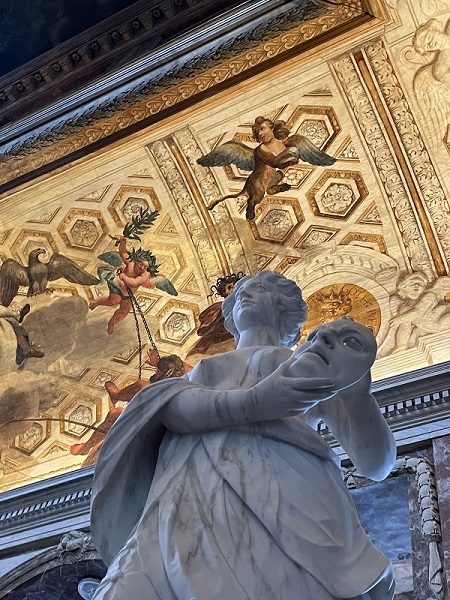
15. Kalmar Castle, Sweden
Queen and Advisor. Kalmar Castle was a significant location for the Swedish rulers Johan and Catherine. Catherine, not merely a wife and mother, was a queen who actively supported her husband, accompanying him on his travels and playing a key role in the Renaissance-style rebuilding of Swedish castles and cities.
Excerpt from the book The Bride of War:
"Let us turn away from wars and the plundering of foreign lands," she declared. "Let us embrace a time of peace, bountiful harvests, and joyful children." Hand-in-hand, Johan and Catherine emerged from the castle gates, greeted by the cheers of their people. They had both endured much, and undoubtedly, many more trials lay ahead. Yet, they were united, their bond unbreakable, until death would part them.
VISIT: Southern Sweden, bordering Denmark, is a region rich in history, particularly the legacy of the royal couple John and Catherine. Kalmar Castle, dating back to the 12th century, originally served as a defensive stronghold against pirates and other threats. However, in the 16th century, the sons of Gustav Vasa I, Eric and John, initiated a transformation, inviting European artists to turn the fortress into a peaceful palace. The chapel, rebuilt under Johan's orders, the grand banquet hall (Green Hall), the opulent reception hall (Golden Hall) with its preserved ceiling decor, and the historic dining room (Gray Hall) are among the castle's surviving features. Interestingly, it was in the Gray Hall that Johan celebrated Easter with his new wife, Gunila, and his children with Catherine, Sigismund, and Ann. The castle's information boards offer a glimpse into Johan's culinary tastes, revealing a menu that included fresh salmon with raisins, eel pâté, and flounder pie.
While Catherine's physical presence is absent, her legacy lives on within the castle's walls. In a hall displaying the Vasa family tree, a brief biography of the Polish princess is presented, along with a replica of her medallion.
Where?: Kalmar Slott, Kungsgatan 1, Kalmar
More: https://kalmarslott.se/en/
Photos by Gerda Butkuvienė
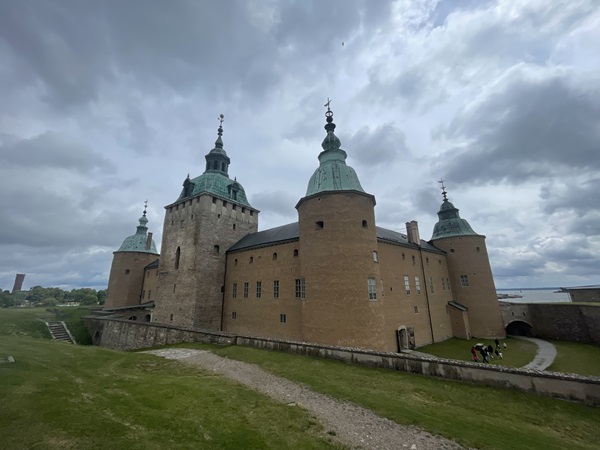


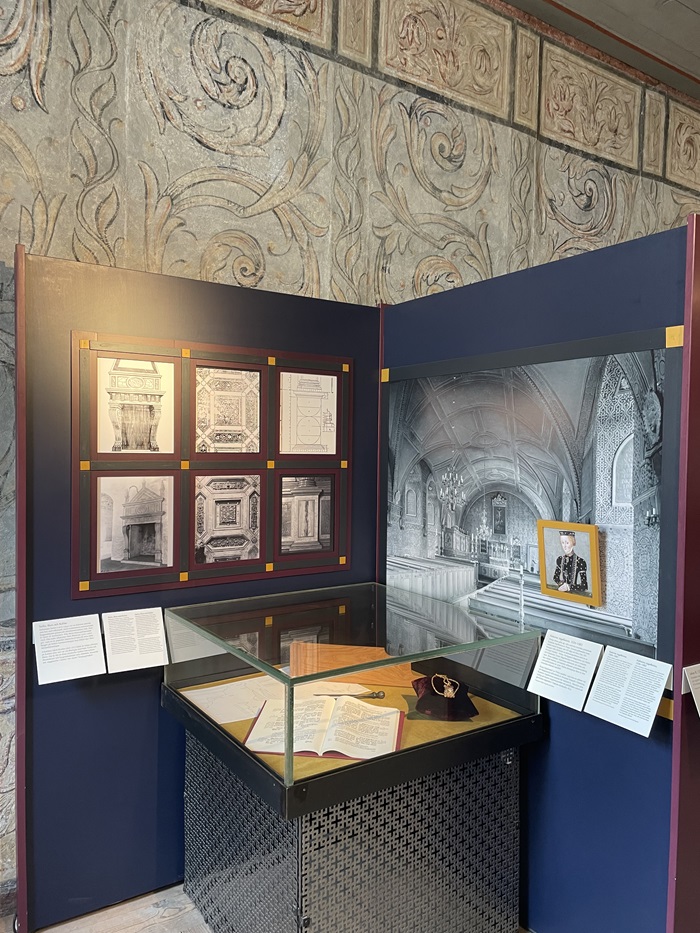
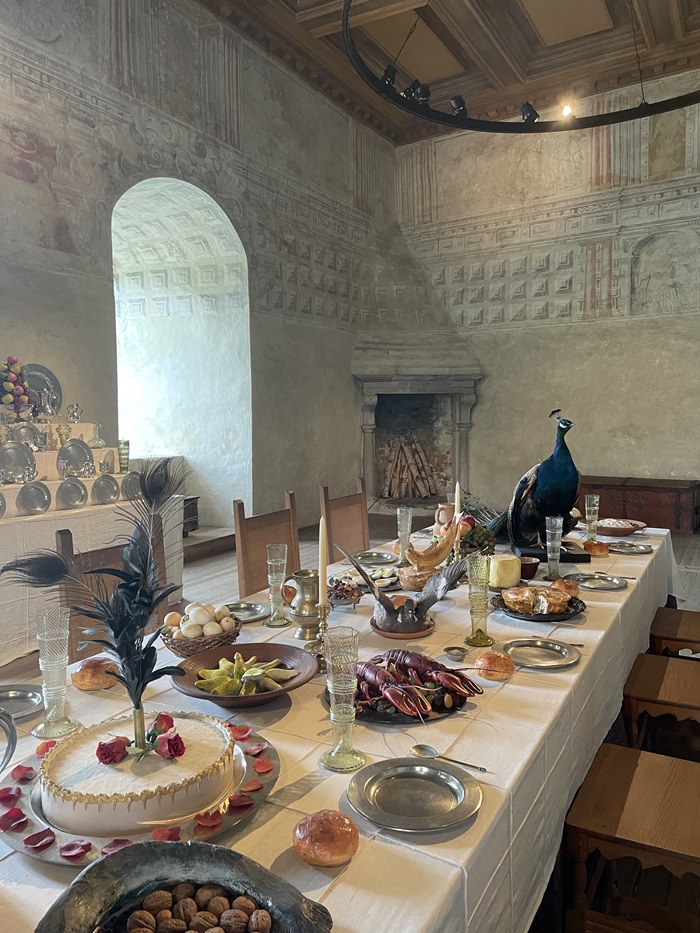
16. Borgholm Castle, Sweden
Nest of love. Borgholm Castle is another significant location associated with Catherine Jagiellon and her husband, King John III. It was here that they spent a significant portion of their lives. The royal couple collaborated to transform the medieval fortress into a Renaissance castle.
Excerpt from the book The Bride of War:
When I arrived, I bowed and saw him, Johan Vasa. I don't understand how those ice-colored eyes can be so glaring? No one has ever looked at me like that. I feel a bit confused, my face is starting to burn. As I danced, his touch warmed my hands, a sensation as familiar as stroking the neck of my beloved horse as I caress him before riding off, trying to feel every hair and twitch of muscle.
VISIT: The ruins of this castle on the island of Öland, Sweden's second-largest island, offer a unique perspective on Catherine Jagiellon. A massive canvas depicting Catherine and her husband, Johan, dominates a wall, portraying her as the true mistress of the castle and the queen of his heart. The exhibition delves into their love story, highlighting Catherine's significant role in the castle's reconstruction. It's intriguing to note that the castle was intended to be a widow's legacy for Catherine after Johan's passing.
12th-century Borgholm, like Kalmar, was a medieval fortress crucial for defending against pirates. In the 14th and 15th centuries, it evolved into one of Sweden's most important military bases. In 1572, under Johan's orders, the castle underwent a transformation. While preserving its medieval character, the fortress was modernized with Renaissance elements. Wooden and stone floors, brick ovens, and tapestries adorned the interior spaces.
It's believed that Catherine Jagiellon played a significant role in shaping the castle's interior design. Inspired by both the Italian Renaissance, her mother's homeland, and her own Polish upbringing, she introduced elements that reflected her refined taste and cultural heritage.
Tragically, a devastating fire ravaged Borgholm Castle in the 19th century, leaving behind only ruins. While the remains of Catherine's apartment, complete with a fireplace, offer a glimpse into her past, the specific details of her living quarters and wardrobe remain a mystery.
Where?: Borgholms Slott, Sollidenvägen 5, Borgholm, Öland
More: https://www.borgholmsslott.se/en/
Photos by Gerda Butkuvienė
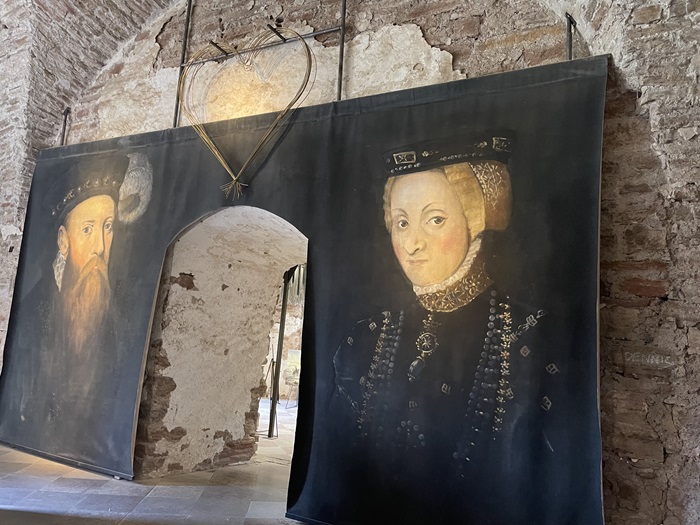
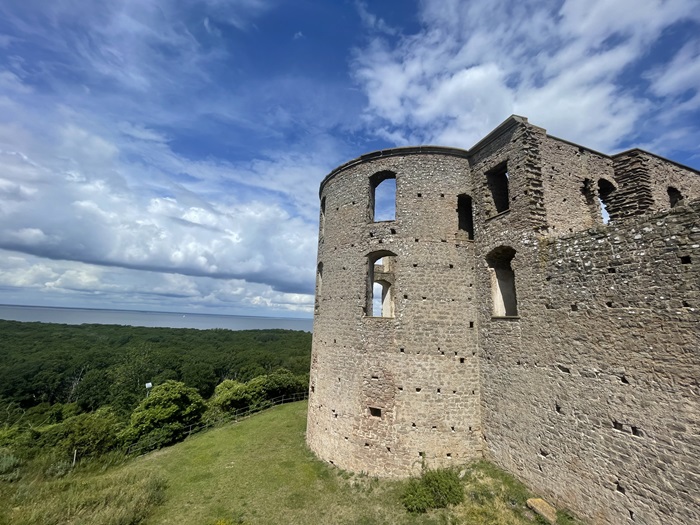
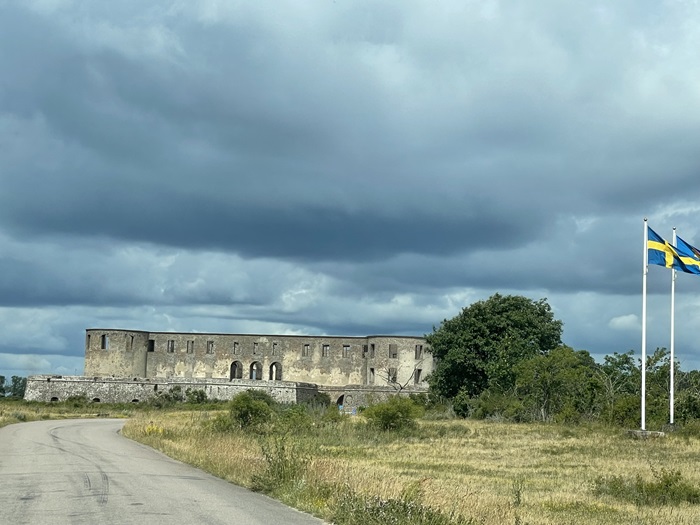
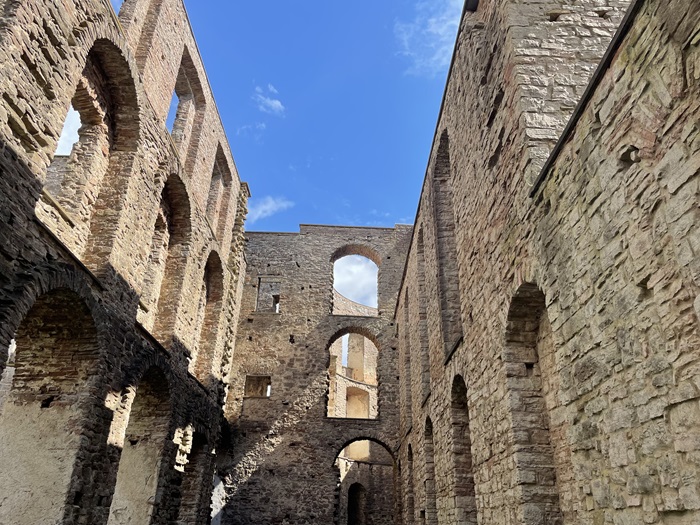

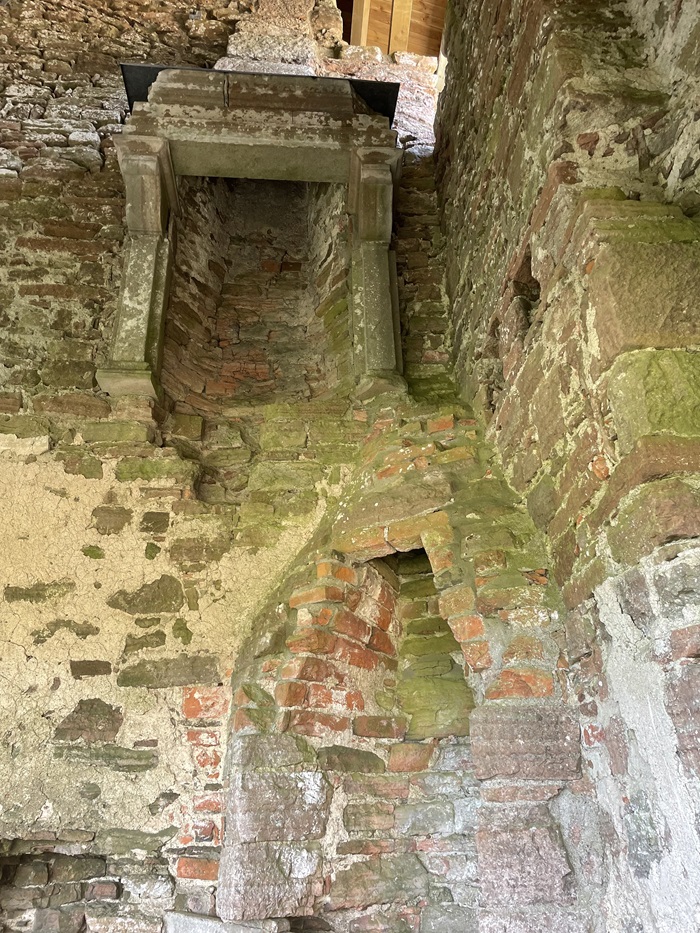
------------------------------------------------------------------------------
Historical sources:
Lithuania–Poland–Sweden: European dynastic connections and historical-cultural connections. Studies of the Palace of the Grand Dukes of Lithuania, Volume XXI. National Museum Palace of the Grand Dukes of Lithuania, Vilnius, 2014.
Duczmal Małgorzata, Jagellonians, Science and Encyclopedia Publishing House, Vilnius, 2012.
https://www.sim1.se/swe/mal/strang/strang_01.html
Saar-Kozłowska, Alicja Joanna, Infantka Szwecji i Polski Anna Wazówna, 1568-1625, Torún: Uniwersytet M. Kopernika w Toruniu, 1995.
